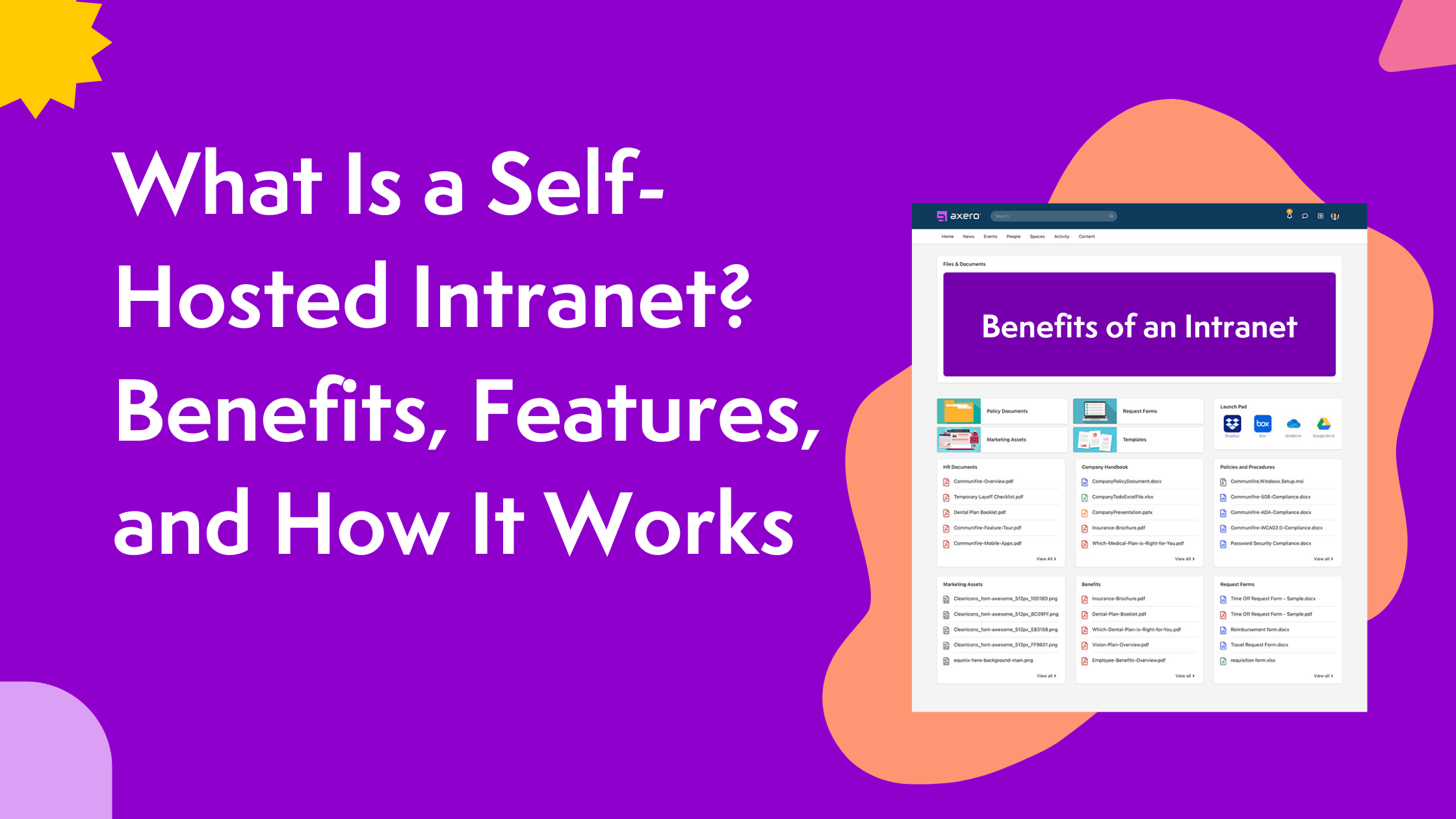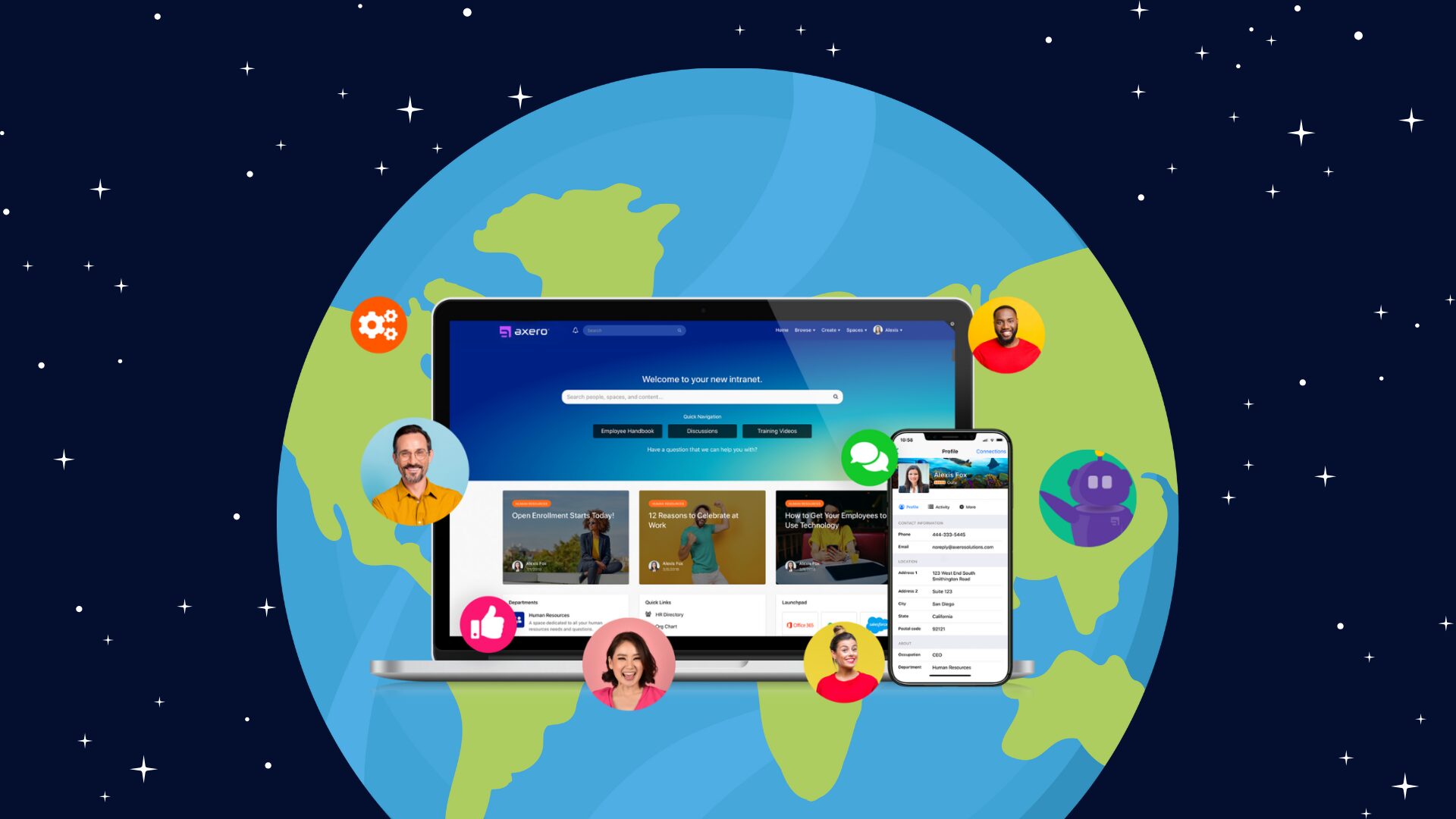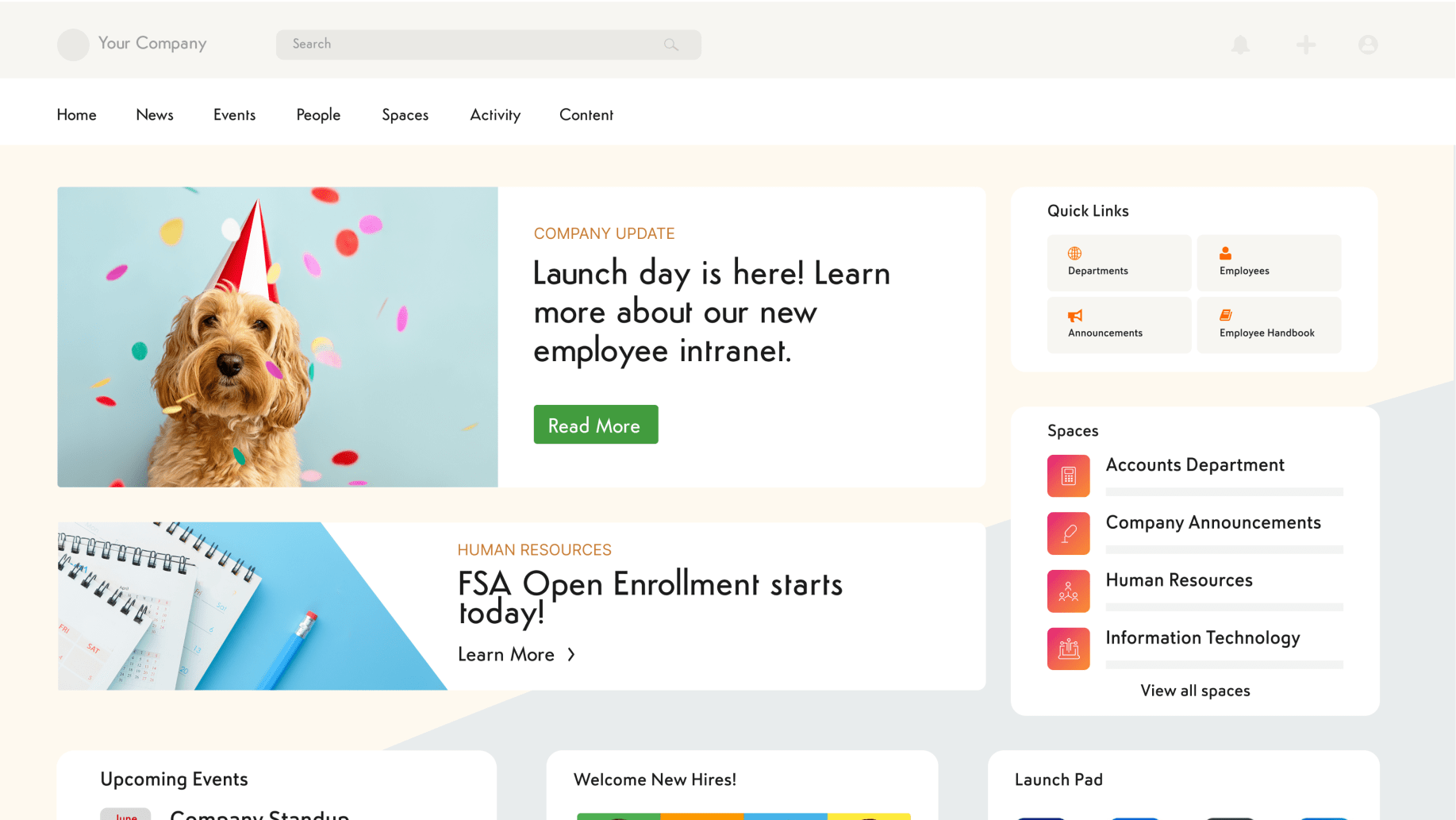Saving your organization money is important. Cutting corners is not.
There are many free intranet software options out there. They may seem like a good idea at first, but they have many issues that can cause you headaches. And money. So, they end up not really being free.
Recently, one of our government clients that uses Axero internally shifted their public facing ASP.NET website to Drupal, an open source software platform.
Within two weeks of going online with the new Drupal version, their site was hacked by a Philippines based hacking group. The entire episode was very embarrassing. They had to shut down the site for 5 days and re-launch the old .NET based site.
The managers there believed that FOSS (Free and Open Source Systems) should be promoted throughout various government organizations.
I am an open source follower myself, but I think that before making a switch to free intranet software, you should consider the pros and cons, instead of blindly advocating open source platforms just because they’re “free and open”.
As a general rule, I would never recommend using an open source or free intranet software for a sensitive government website, since it might hold confidential data.
Sure, open source has its advantages, but it’s the disadvantages that most people overlook.
Here are 5 major points to consider before choosing a open source, or free intranet software.
1. Open source intranet software is more hack-prone and less secure than closed source.
When you have sensitive information on your intranet, it needs to be secure.
Many people assert that intranet and peer work make open source platforms stable and less buggy. But the fact remains, any hacker with programming knowledge can examine the entire source code of such a system and come up with multiple ways of hacking it. When you have access to the source code, you are able to find vulnerabilities. When you find vulnerabilities, you can exploit them.
Closed-source products, in comparison, are more difficult to hack. They involve a lot more trial-and-error or brute force attacks rather than pre-meditated, targeted attacks, which open source platforms are vulnerable to.
“But what about Linux?”
Some will argue that Linux is much more secure when compared to Windows. But they forget that Linux is based on Unix, one of the most secure systems, built with security in mind.
Open source CMS and intranet platforms like Drupal, Joomla, WordPress, etc., do not have that luxury. It is much easier to hack an open source system when compared to a closed source platform.
2. Legal licensing issues with open source intranet software.
Most people mistakenly assume that open source is by default “free”. This is not necessarily true.
Usually BSD (Berkeley Software Distribution) / MIT licensed software is essentially free and can be distributed commercially. There is also the GPL (General Public License) and LGPL (Library General Public License), which has many restrictions in place.
I would advise going through the licensing terms carefully before selecting free intranet software.
3. Poor code quality.
Some open source software solutions are much better than most commercial systems. For example, memcached, Lucene, and Linux are platforms that are not only superior to commercial alternatives, but they all feature code quality that is above standard.
But, still, a lot of free intranet software have poorly written, badly managed code. This not only hurts performance, but also makes it impossible to scale when the load grows.
Remember the Twitter story: they had to ditch the Rails platform because it was not as scalable as they expected.
Here’s a point of view taken from Mark Tarver.
Why is Free Software so Bad in Quality?
Most free software is poor or unusable. This is heavily disguised because protagonists like to use the isolated points fallacy to sell the idea FOSS is great.
The isolated points fallacy consists in taking the high scoring points on the graph and ignoring all the other points. Hence FOSS champions wheel out the standard examples of success – Star Office, Emacs, Red Hat Linux, and SBCL – ignoring the vast sea of floating half submerged buggy and abandoned projects (over 120,000) that litter SourceForge. It is the sort of technique Mugabe would use for TV. If you’re accused of starving the country, wheel out a handful of well nourished kids for people to see. ‘Look, our country is fine; see how healthy these kids are’. Out in the slums the less fortunate die of cholera.
In practice the great debate between BSD/MIT, GPL and the closed source people there is an important truth about software development which gets obscured. It’s absolutely basic. Here it is.
Good software arises when one or more very good programmers work closely full time together over a period of time developing, maintaining and improving it.
That’s it. Very simple. Except its not, because if you’re lucky enough to attract such a team you need to keep them together. And for that you need capital and that is exactly where FOSS falls down. This is the main reason why so much FOSS is of poor quality.
Digging deeper into the poor code quality of free intranet software, we can isolate a few specific points as to why free isn’t always the best option.
Lack of flexibility.
The majority of the free options embrace a “one-size-fits-all” approach. Their goal is to shoehorn as many companies as possible into one model.
Intranet software – by it’s nature – is personal. How you do business is going to be different than the next company. And these differences have a profound effect on how the intranet software needs to work for you.
Intranets are successful when you tailor them to how your business works. Flexible intranet software is easy to customize because it’s built into the platform. Free intranet options are often difficult to customize. You might have to stick with what you get.
Lack of meaningful updates.
Your intranet needs to grow with your business. That means it will need updates, new features, and enhancements. Sometimes these free options offer updates, although many don’t. So when you need to add a feature, you’re stuck in the mud.
With a reputable intranet vendor that has paying customers, you’ll get updates and enhancements. Plus, you’ll be able to talk to the vendor about your challenges. They want to talk because they want to improve the software.
Instability.
When you set up an intranet, there’s a lot of time, effort, and energy that goes into the process. It becomes a valuable tool that your organization uses on a daily basis.
What happens when your free intranet software crashes or the site goes down? You might be able to get it running again, but then it becomes a worry you don’t need.
No advanced features.
More often than not, free intranet software means that you get nothing but the basic features. The lowest common denominator. The one-size-fits-all.
Limited or no bug testing.
You could have the most feature-rich open source intranet software on the planet. But it will be useless if it’s peppered with bugs.
Free intranet software isn’t always tested. And even if you have a software team in your company to fix bugs … fixing one bug may create ten more. You never know.
Reputable vendors spend a great deal of time identifying and fixing software bugs.
4. Lack of quality customer support.
Whenever you install new software, you’re always taking a risk. Organizational change is hard for people. New software is annoying. And you always have that voice in the back of your head saying: will it work?
Imagine you have just installed free intranet software. Your employees are logging in, posting content, sharing files, and having conversations. All seems well.
Then, while someone is uploading the sales presentation, the software gives you an error. Now what? Who do you call?
Most open source intranet platforms have poor support or little to no support options at all. None. Nada. Unless the company offering the free intranet software also offers a support plan. And in that case, you’ll pay for the support. So, free isn’t actually free.
If you get stuck, you will have to depend on the community feedback and support, unlike professional software support agreements backed by SLAs.
Sometimes you need a solution urgently, and waiting 2-3 days or more to get support on your critical issue is not a feasible scenario.
This is where dedicated managed support comes in handy.
5. Hidden costs.
Most people don’t realize that free intranet software options come with hidden costs. This is a trick that software companies have been pulling for years. Limited features, a limited number of free users, in-app purchases, etc.
When you factor in …
- the lack of support,
- little or no customization options, and
- no updates …
… you’ll have to migrate at some point anyway! So, is the free option free? Or could it even end up being more expensive in the long run?
In conclusion.
To summarize, open source software is one of the greatest things that has happened in the IT industry, and it will continue to grow. There are many amazing open source tools, but using open source systems for your sensitive internal intranet can be a risky affair.
In the long-run, maintaining free intranet software can turn out to be much more expensive than a commercially backed solution.
Intranet software doesn’t have to cost your organization a lot of money. If you select the right software, you can customize a solution that will work for you … while staying on budget.
Intranet software is an investment that will pay off over time. When you make the right decisions, you’ll be enjoying the benefits for years to come.














 info@axerosolutions.com
info@axerosolutions.com 1-855-AXERO-55
1-855-AXERO-55


